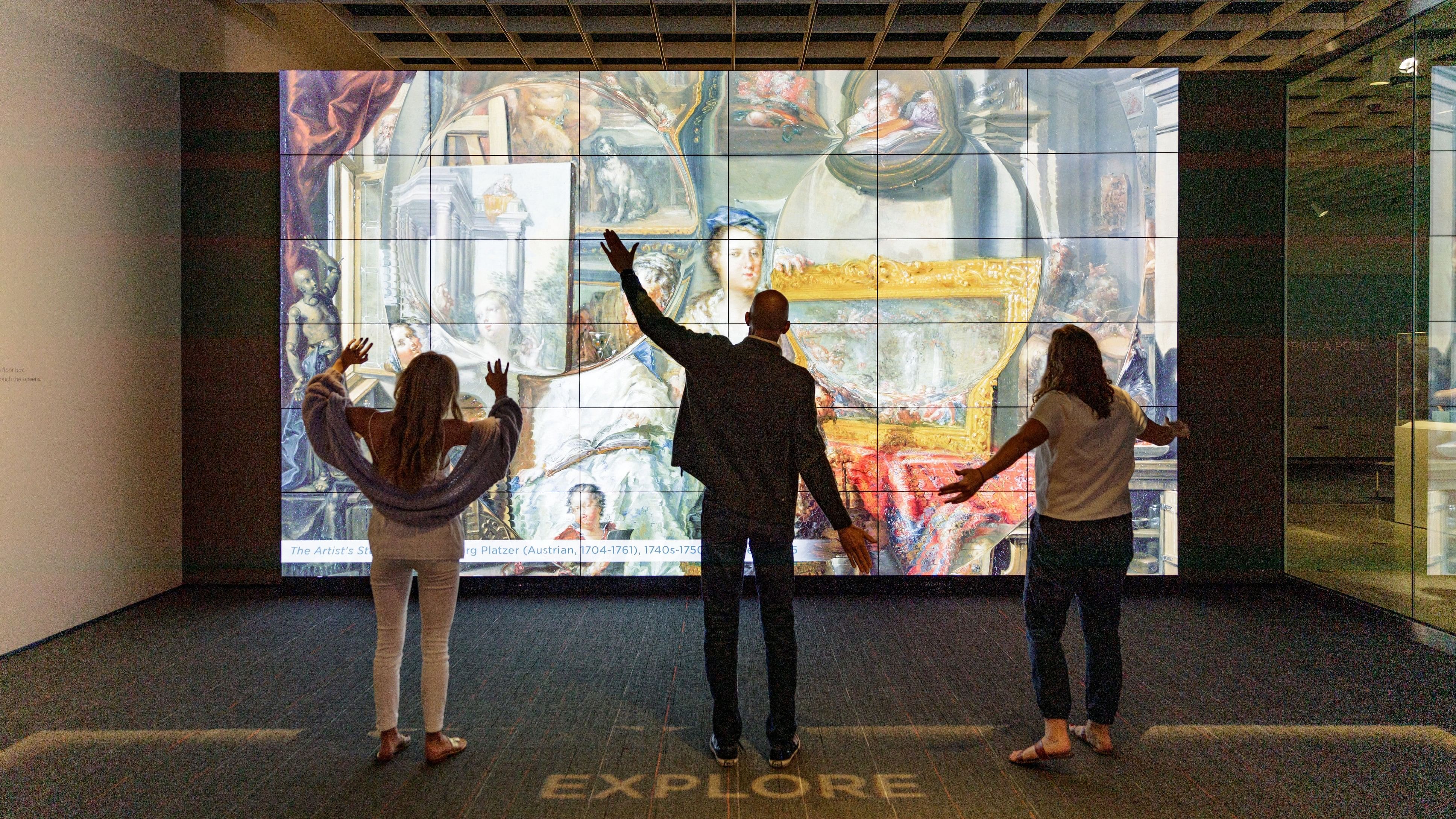
Artlens, an interactive exhibit space at the Cleveland Museum of Art.
Pic courtesy: Wikimedia Commons
The relationship between art and its audience has always been an interesting one. French painter Marcel Duchamp famously said: ‘Both the artist and the viewer contribute to the completion of a work of art’. While context plays a huge role in the engagement and interpretation of the art, it can still be a complex process, leading to deeper insights or unexpected readings and even controversies. Add technology to this, and it can lead to further twists and potential complications.
In current times, the situation is even more challenging, where artists, galleries and institutions have to go the extra mile to not only draw in audiences but also generate meaningful engagements. Audience development has thus assumed greater significance today, where components related to marketing and promotional strategies on one hand and programming focused on education and learning on the other, have become critical in creating a dialogue between the art and the audience.
Conventionally, outreach programs built around the exhibition to create for a for further engagement with the primary exhibit relied on performances, talks and lectures, workshops and panel discussions and other innovative events. The emphasis is on making art accessible, dissolving barriers between the art and the audience, and simultaneously building relationships with the existing audience while enticing new ones. As part of this effort, technology is often employed to reach out to more audiences and to forge greater engagement with them through immersive programming.
Van Gogh’s 360°, an immersive show that used technology to convert Van Gogh’s select art pieces into a three-dimensional experience with projections on the walls and floors accompanied by classical instrumental music, drew huge crowds in several cities. As a multimedia exhibition anchored in tech, it cannot be directly compared with other ‘conventional’ exhibitions, but it is perhaps an example of the extensive use of technology to create an immersive experience. After all, a multi-sensory experience is more likely to engage the audience actively and leave a lasting impression.
A digital interactive installation no doubt allows for play and enhanced learning opportunities. Touchscreen walls with digital artworks and app-based information layers accessible on the phone are some of the technology-based tools that make art more lively. For instance, at the Cleveland Museum of Art, Artlens is a gallery which integrates physical artworks and their digital representations, which respond to gestures, akin to interactive games.
While creating interactive exhibits and kinetic experiences, technology can be a handy tool, but the danger is when it begins to overshadow art. This is a real challenge facing artists and institutions today to find a balance between art, application of technology and accessibility. It also raises queries regarding authenticity — at what point does the art cease being authentic?
In addition, questions regarding ownership of the art, especially when it incorporates data collected from the audience or even private sources assume relevance. There can also be associated privacy and security concerns. Some interactive installations and exhibits gather viewers’ data and there could be apprehensions regarding data storage and its ethical usage.
Fortunately, these are early days, and the use of technology as a bridge between art and audiences will streamline and address several of these concerns in due course. It is the interim which requires judicious strategising, even as we continue to employ technology to democratise art and make it all the more fascinating.
Dab Hand is your art world lowdown. The author is a Bengaluru-based art consultant, curator and writer. She blogs at Art Scene India.